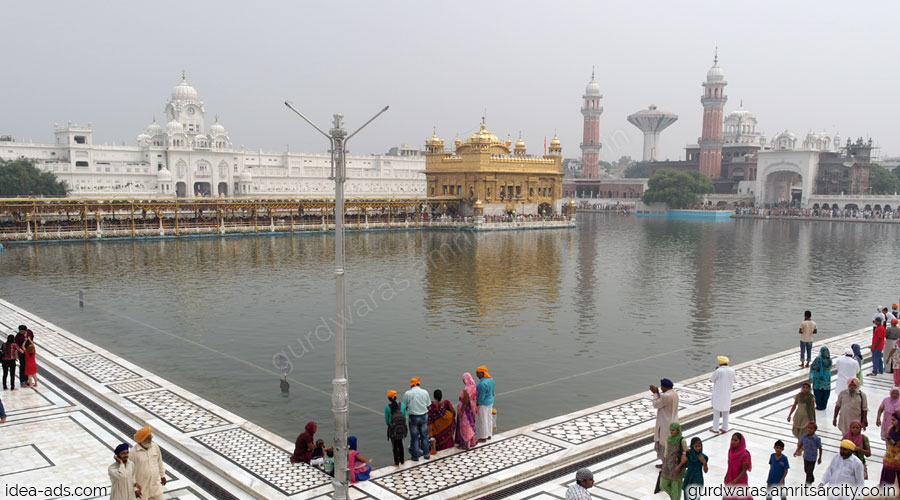
Amritsar Sarovar, also known as the Pool of Nectar, is a sacred and historic water tank located in the city of Amritsar, Punjab, India. It is one of the most significant landmarks of Sikhism and holds immense religious and historical importance for Sikhs around the world.
The Amritsar Sarovar is famously associated with Harmandir Sahib, also known as the Golden Temple, which stands in the middle of the sarovar. The sarovar and the Sri Darbar Sahib Amritsar (The Golden Temple Amritsar) complex together form the spiritual and cultural center of Sikhism. The sarovar itself is a large rectangular water tank, spanning an area of approximately 150 meters by 150 meters.
The construction of the Amritsar Sarovar was initiated by Guru Ram Das Ji, the fourth Sikh Guru, in the 16th century. It was further expanded and beautified by Guru Arjan Dev Ji, the fifth Sikh Guru. The sarovar was designed to symbolize the concept of equality, unity, and purity in Sikhism. It is believed that the sarovar's waters have healing properties and can cleanse the soul of a devotee.
The sarovar is fed by the river through a network of underground channels. The water is continuously replenished to maintain its purity. The sarovar is surrounded by a marble walkway known as the Parikrama , where pilgrims can take a circumambulation, offering prayers and paying their respects. Devotees often take a dip in the sarovar as an act of purification and to seek spiritual blessings.
A prominent feature of the Amritsar Sarovar is the causeway known as the Guru's Bridge, which connects the Golden Temple with its entrance on the mainland. The bridge leads devotees to the sanctum sanctorum of the Sri Darbar Sahib Amritsar (The Golden Temple Amritsar), where the Guru Granth Sahib, the holy scripture of Sikhism, is placed. The reflection of the Sri Darbar Sahib Amritsar (The Golden Temple Amritsar) in the sarovar creates a mesmerizing and serene view, especially during the evening and night when the temple is illuminated.
The sarovar and the Sri Darbar Sahib Amritsar (The Golden Temple Amritsar) complex witness millions of visitors and pilgrims every month. The atmosphere around the sarovar is filled with spirituality, devotion, and a sense of community. It serves as a place of solace, reflection, and religious observances. The sarovar is not only a significant pilgrimage site but also a symbol of Sikh identity and the embodiment of Sikh values such as selfless service, equality, and compassion.
In summary, Amritsar Sarovar is a sacred water tank that holds great religious and historical importance for Sikhs. It forms an integral part of the Sri Darbar Sahib Amritsar (The Golden Temple Amritsar) complex and serves as a focal point for spiritual practices, devotion, and community gatherings. The sarovar's serene ambience and its association with Sikh traditions make it a cherished destination for devotees and visitors seeking spiritual enlightenment and solace.
The word Kar Sewa means the construction or cleaning of the historical religious place. In this connection Kar Sewa of Sarovar or the holy tank mean’s cleaning of Sarovar and the removal of the assembled silt from its bed. The First Kar Sewa was performed by Guru Amar Das Ji. On November 1573 digging up of Sarovar started, after ardaas in presence of Baba Buddha Ji.
and after 1900s the first kar seva, of cleaning the Amrit Sarovar was undertaken on June 17, 1923, after the inception of the SGPC. The seva was started by Sham Singh of Atta Mandi, Amritar, Gulab Singh Gholia (Moga), Fateh Singh, head Granthi Sri Harmandir Sahib, (The Sri Darbar Sahib Amritsar (The Golden Temple Amritsar)), Baba Kharak Singh, the then SGPC president and S Teja Singh Sammundari.